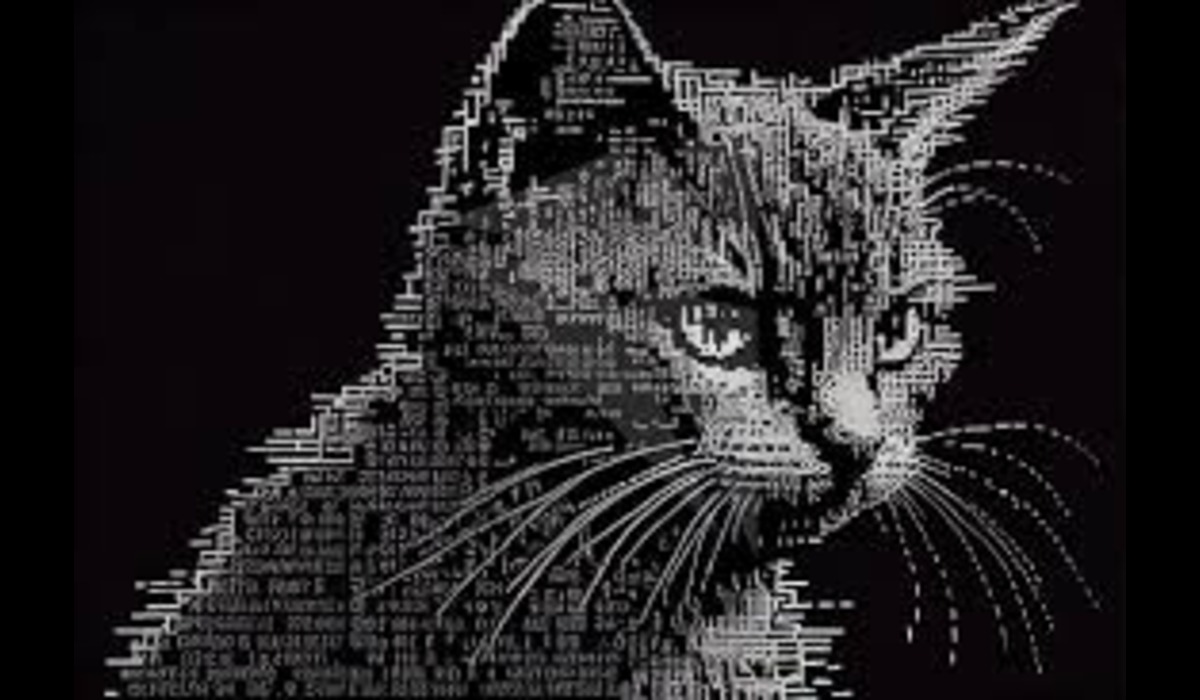General
Käämyäjä: Unraveling the Mysteries of Nature’s Carpet
Published
2 months agoon
By
Ahmad khan
Introduction
Exploring the Enigmatic Käämyäjä
Defining Käämyäjä
Käämyäjä, also known as “forest hummocks,” “bryophyte hummocks,” or simply “moss hummocks,” refers to the dense, carpet-like formations found in forest ecosystems. These formations consist of a complex interweaving of mosses, lichens, decaying organic matter, and other plant materials. They vary in size, shape, and composition depending on environmental conditions and the species present.

Characteristics and Formation
The formation of begins with the accumulation of organic debris and plant materials on the forest floor. Over time, these materials undergo decomposition, facilitated by microorganisms and detritivores. As decomposition progresses, a dense layer of humus forms, providing a fertile substrate for mosses, lichens, and other vegetation to colonize. The gradual growth and accumulation of these organisms result in the formation of .
The Role of Environmental Factors
Environmental factors such as moisture, temperature, light, and substrate composition play critical roles in shaping the characteristics of . Moisture levels influence the growth and activity of mosses and lichens, with wetter conditions favoring their proliferation. Temperature fluctuations can affect decomposition rates and microbial activity, influencing the accumulation of organic matter. Light availability determines the distribution of photosynthetic organisms within , impacting its overall structure and composition. Additionally, substrate composition, including soil texture and nutrient content, influences the types of plant species that can thrive within formations.
Understanding its Significance in Ecology
Ecological Significance
serves as a crucial component of forest ecosystems, providing habitats, supporting biodiversity, and contributing to ecosystem functions. Its dense structure creates microhabitats for a variety of plant and animal species, including mosses, lichens, fungi, insects, and small mammals. These microhabitats offer shelter, nesting sites, and food sources, facilitating the survival and reproduction of diverse organisms. Furthermore, plays a vital role in nutrient cycling, carbon sequestration, and soil stabilization, enhancing the resilience and sustainability of forest ecosystems.
Biodiversity Hotspots: Käämyäjä as a Habitat
formations harbor a rich diversity of flora and fauna, making them biodiversity hotspots within forest ecosystems. Mosses and lichens are primary colonizers of , forming intricate mats and cushions that support a multitude of microorganisms and invertebrates. These microhabitats provide niches for specialized species adapted to the unique environmental conditions within , including moisture levels, light intensity, and nutrient availability. Consequently, supports a wide range of plant and animal biodiversity, contributing to the overall ecological richness of forest ecosystems.
Impact on Soil Health and Nutrient Cycling
In addition to its role as a habitat, plays a significant role in soil health and nutrient cycling. The dense layer of organic matter within acts as a reservoir of nutrients, storing and releasing essential elements such as nitrogen, phosphorus, and potassium. As organic materials decompose, nutrients are gradually released into the surrounding soil, enriching it and supporting the growth of adjacent vegetation. Furthermore, Käämyäjä enhances soil stability and moisture retention, preventing erosion and promoting soil fertility. By facilitating nutrient cycling and soil formation, Käämyäjä contributes to the productivity and sustainability of forest ecosystems.
Unraveling the Mysteries
The Science Behind Käämyäjä
Despite its ubiquity in forest ecosystems, remains a subject of scientific inquiry and fascination. Researchers seek to unravel the mysteries surrounding its formation, composition, and ecological functions, employing a variety of methods and techniques to study this enigmatic phenomenon.
Studying Käämyäjä: Methods and Techniques
Scientific investigations into often involve a combination of field observations, laboratory analyses, and ecological modeling. Field studies involve detailed surveys of formations in various forest ecosystems, documenting their spatial distribution, physical characteristics, and associated plant and animal communities. Laboratory analyses focus on the composition and structure of , utilizing techniques such as microscopy, spectroscopy, and molecular biology to identify and quantify the organisms present. Ecological modeling provides insights into the dynamics of ecosystems, simulating interactions between environmental factors, biological processes, and ecosystem functions. Through these multidisciplinary approaches, scientists aim to deepen our understanding of and its ecological significance.
Insights into Microbial Communities
Central to the study of is the role of microbial communities in its formation and functioning. Microorganisms such as bacteria, fungi, and archaea play critical roles in decomposing organic matter, cycling nutrients, and shaping the structure of ecosystems. Recent advances in molecular biology and DNA sequencing have enabled researchers to characterize the diversity and composition of microbial communities within formations. These studies have revealed complex interactions between microbes, plants, and environmental factors, highlighting the importance of microbial processes in driving the dynamics of ecosystems. By elucidating the role of microbial communities in , scientists can gain valuable insights into the functioning of forest ecosystems and their response to environmental change.
The Diversity of Käämyäjä
Types of Käämyäjä
exhibits remarkable diversity in its form, structure, and composition, reflecting variations in environmental conditions and ecological interactions. While the basic morphology of consists of a dense layer of mosses and lichens covering the forest floor, specific characteristics can vary widely depending on factors such as climate, substrate type, and vegetation composition. Different types of formations include:
- Moss-dominated Käämyäjä: Characterized by a dense layer of mosses, often with sparse lichen cover, this type of is commonly found in cool, moist environments such as boreal forests and temperate rainforests.
- Lichen-dominated Käämyäjä: Featuring a predominance of lichens, with mosses occurring sporadically, this type of is typically found in arid or subarctic regions where lichens are more abundant than mosses.
- Mixed-species Käämyäjä: Comprising a diverse assemblage of mosses, lichens, ferns, and other vegetation, this type of occurs in diverse forest ecosystems where multiple plant species coexist and compete for space.
Variation Across Different Ecosystems
The characteristics of can vary significantly across different ecosystems, reflecting local variations in climate, geology, and vegetation. In boreal forests, for example, formations may be dominated by sphagnum mosses and dwarf shrubs, with occasional patches of lichens and vascular plants. In tropical rainforests, formations may exhibit greater species diversity and structural complexity, with epiphytic orchids, bromeliads, and ferns adorning the forest floor. Coastal ecosystems, such as mangrove forests and salt marshes, may host specialized forms of adapted to saline conditions and tidal fluctuations. Across these diverse ecosystems, serves as a critical component of forest biodiversity, providing habitats, supporting nutrient cycling, and enhancing ecosystem resilience.
Adaptations to Environmental Conditions
The organisms inhabiting have evolved a variety of adaptations to thrive in their respective environments. Mosses and lichens, for example, possess unique physiological and morphological traits that enable them to tolerate extreme conditions such as drought, freezing temperatures, and nutrient scarcity. Many moss species can absorb and retain water through specialized structures known as hyaline cells, allowing them to survive in dry environments. Lichens, symbiotic associations between fungi and algae or cyanobacteria, can fix atmospheric nitrogen and photosynthesize in low-light conditions, enabling them to colonize diverse habitats. Additionally, some species exhibit reproductive strategies such as vegetative propagation and spore dispersal, allowing them to colonize new habitats and establish resilient populations. These adaptations contribute to the ecological success of communities and their ability to persist in challenging environments.
Käämyäjä and Climate Change
Vulnerability to Environmental Shifts
Despite their resilience, ecosystems are vulnerable to the impacts of climate change, including shifts in temperature, precipitation, and weather patterns. Rising temperatures and altered precipitation regimes can disrupt the delicate balance of moisture within formations, affecting the growth and survival of mosses and lichens. Extreme weather events such as droughts, floods, and storms can cause physical damage to structures, leading to fragmentation and degradation. Furthermore, changes in temperature and humidity can influence the composition of microbial communities within , potentially altering nutrient cycling and ecosystem functions. Overall, the cumulative effects of climate change pose significant challenges to the resilience and stability of ecosystems, requiring adaptive management strategies to mitigate their impacts.
Implications for Ecosystem Stability
The impacts of climate change on Käämyäjä ecosystems have broader implications for the stability and functioning of forest ecosystems. As primary producers and habitat providers, Käämyäjä formations play essential roles in supporting food webs, regulating nutrient cycling, and maintaining ecosystem services such as carbon sequestration and water filtration. Disruptions to Käämyäjä ecosystems can cascade through ecological networks, affecting the abundance and distribution of plant and animal species, altering community dynamics, and compromising ecosystem resilience. Additionally, changes in Käämyäjä structure and composition can feedback to influence climate processes, such as carbon storage and greenhouse gas emissions, further exacerbating climate change impacts. By understanding the vulnerabilities of Käämyäjä ecosystems and their interconnectedness with broader ecological systems, scientists and policymakers can develop strategies to enhance their resilience and adaptability in the face of environmental change.
Mitigation Strategies
Addressing the impacts of climate change on Käämyäjä ecosystems requires a multifaceted approach that integrates conservation, restoration, and adaptation measures. Conservation efforts aim to protect and preserve existing Käämyäjä habitats, safeguarding their biodiversity and ecosystem functions. This may involve establishing protected areas, implementing land-use planning policies, and promoting sustainable forest management practices that minimize habitat disturbance and fragmentation. Restoration efforts focus on restoring degraded or damaged Käämyäjä ecosystems, enhancing their resilience and functionality through habitat restoration, reforestation, and invasive species control. Adaptation measures seek to increase the adaptive capacity of Käämyäjä ecosystems to withstand and recover from climate change impacts. This may include promoting species diversification, enhancing ecosystem connectivity, and implementing monitoring and adaptive management strategies to track changes and adjust conservation priorities accordingly. By combining these approaches, stakeholders can work together to conserve Käämyäjä ecosystems and ensure their continued contribution to biodiversity conservation, ecosystem services, and human well-being.
The Role of Käämyäjä in Restoration Ecology
Utilizing Käämyäjä in Ecosystem Rehabilitation
Käämyäjä plays a valuable role in restoration ecology, offering a natural solution for ecosystem rehabilitation and regeneration. Its ability to stabilize soils, retain moisture, and support plant growth makes it an ideal substrate for revegetation efforts in degraded or disturbed landscapes. Restoration projects often incorporate Käämyäjä into revegetation plans, using it as a seedbed or nursery for native plant species. By reintroducing Käämyäjä and associated vegetation into degraded areas, restoration practitioners can accelerate the recovery of ecosystem structure and function, enhance biodiversity, and promote landscape resilience. Furthermore, Käämyäjä can serve as an indicator of ecosystem health and recovery, providing valuable insights into the success of restoration interventions and the long-term sustainability of restored landscapes.
Enhancing Biodiversity and Soil Health
Käämyäjä restoration projects have been shown to enhance biodiversity and soil health in degraded ecosystems. By creating microhabitats for a variety of plant and animal species, Käämyäjä promotes species diversity and ecosystem resilience, helping to rebuild ecological communities and food webs. Furthermore, Käämyäjä improves soil structure and fertility, facilitating the establishment of vegetation and the cycling of nutrients. Over time, restored Käämyäjä ecosystems can contribute to the recovery of ecosystem services such as carbon sequestration, water purification, and erosion control, benefiting both human communities and the natural environment. As such, Käämyäjä restoration represents a cost-effective and environmentally sustainable approach to ecosystem rehabilitation, with potential applications in a wide range of landscapes and ecosystems.
Case Studies and Success Stories
Numerous case studies and success stories demonstrate the effectiveness of Käämyäjä restoration in diverse ecosystems around the world. In boreal forests, for example, restoration projects have successfully reintroduced Käämyäjä and associated vegetation into clear-cut areas, accelerating the recovery of forest ecosystems and enhancing biodiversity. In coastal wetlands, Käämyäjä restoration has helped to stabilize soils, reduce erosion, and create habitat for endangered species such as shorebirds and amphibians. In urban environments, Käämyäjä green roofs and living walls have been used to enhance biodiversity, improve air quality, and mitigate the urban heat island effect. These examples highlight the versatility and scalability of Käämyäjä restoration as a tool for ecosystem conservation and sustainable development.
Conservation Efforts and Challenges
Protecting Käämyäjä Habitats
Conserving Käämyäjä habitats presents unique challenges due to their susceptibility to human activities, climate change, and invasive species. Habitat loss and fragmentation are major threats to Käämyäjä ecosystems, resulting from urbanization, agriculture, logging, and infrastructure development. Fragmentation disrupts ecological processes such as seed dispersal, pollination, and wildlife movement, reducing the resilience of Käämyäjä populations and increasing their vulnerability to environmental stressors. Additionally, invasive species such as non-native plants, pests, and pathogens can outcompete native vegetation, alter ecosystem dynamics.
Conclusion
Embracing the Enchantment of Käämyäjä
Preserving Nature’s Carpet for Generations to Come
Käämyäjä, often referred to as “Nature’s Carpet,” is a fascinating aspect of ecosystems worldwide. Its intricate formations and ecological significance have captivated scientists and nature enthusiasts alike. In this article, we delve into the mysteries surrounding Käämyäjä, exploring its formation, ecological importance, and implications for conservation and restoration efforts.
You may like
General
Warren Buffett and the Dead Squirrel: A Curious Incident
Published
11 hours agoon
July 26, 2024By
Ahmad khan
Introduction of Warren Buffett
Warren Buffett, often heralded as one of the greatest investors of all time, has his name associated with numerous remarkable anecdotes that highlight his unique personality and investment philosophy. However, one lesser-known yet intriguing story that has surfaced is the tale of Warren Buffett and a dead squirrel. This seemingly odd narrative has captured the attention of many, sparking curiosity and interest. What is the story behind Warren Buffett and the dead squirrel? How does this peculiar incident reflect on his persona? Let’s delve into this curious case and explore its nuances.
The Origin of the Tale
The story of Warren Buffett and the dead squirrel reportedly originates from a time when Buffett was dealing with a pest problem at his residence. Like many homeowners, he encountered the issue of squirrels intruding into his home. Known for his practical and frugal approach to life, Buffett chose a straightforward method to address the problem – setting traps to catch the pesky intruders.
One day, to his dismay, he discovered a dead squirrel caught in one of the traps. This incident, while seemingly mundane, has been recounted with various embellishments over the years, transforming it into an anecdote that many find surprisingly telling about Buffett’s character.
The Incident and Buffett’s Reaction
What makes this story noteworthy is not the act of setting traps or the unfortunate demise of the squirrel, but Buffett’s reaction to the situation. According to sources, Buffett’s approach was matter-of-fact and pragmatic. He dealt with the dead squirrel without much fuss, reflecting his practical mindset.
Buffett’s reaction can be interpreted as a demonstration of his ability to handle unexpected and unpleasant situations calmly and efficiently. This trait is mirrored in his investment philosophy, where he is known for his steady and composed demeanor, even in the face of market volatility and economic downturns.
The Symbolism of the Squirrel Story
While on the surface, the story of Warren Buffett and the dead squirrel might appear trivial, it holds symbolic significance when viewed through the lens of Buffett’s life and career. Here are a few ways in which this incident metaphorically represents Buffett’s approach to life and investing:
- Practicality: Buffett is renowned for his no-nonsense, practical approach to investing. Just as he dealt with the squirrel issue directly, he approaches investment decisions with a straightforward, logical mindset, focusing on fundamentals rather than getting swayed by market hype.
- Resilience: The calm handling of the dead squirrel situation reflects Buffett’s resilience. In the world of investing, setbacks are inevitable, and Buffett’s ability to stay composed and make rational decisions is a key reason for his success.
- Attention to Detail: Buffett’s decision to personally address the pest problem at his home illustrates his meticulous nature. This attention to detail is a hallmark of his investment strategy, where he thoroughly researches and analyzes potential investments before committing.
Lessons from the Incident
The story of Warren Buffett and the dead squirrel, while unusual, offers several valuable lessons, especially for aspiring investors:
- Stay Calm Under Pressure: Just as Buffett handled the squirrel situation calmly, it is crucial to maintain composure when faced with challenges in investing. Panic can lead to rash decisions, while a calm mind is more likely to make rational choices.
- Be Pragmatic: Buffett’s pragmatic approach to solving the pest problem mirrors his investment philosophy. Focus on practical, effective solutions rather than getting caught up in emotions or theoretical possibilities.
- Pay Attention to Details: Buffett’s success is largely due to his thorough research and attention to detail. Aspiring investors should adopt a similar approach, diligently analyzing potential investments and understanding the intricacies involved.
FAQs
Q1: Is the story of Warren Buffett and the dead squirrel true?
While the exact details of the story may have been embellished over time, it is rooted in an incident where Buffett dealt with a pest problem at his home. The narrative has since taken on a life of its own, becoming a symbolic tale that reflects Buffett’s pragmatic nature.
Q2: What does the story signify about Warren Buffett’s character?
The story highlights Buffett’s practical, calm, and meticulous nature. These traits are integral to his success as an investor, showcasing his ability to handle unexpected situations efficiently and his attention to detail.
Q3: How can investors learn from this story?
Investors can learn the importance of staying calm under pressure, adopting a pragmatic approach to problem-solving, and paying attention to details. These lessons are applicable not only in investing but in various aspects of life.
Q4: Why has this story gained attention?
The story has gained attention because it provides a glimpse into Buffett’s personality in a relatable and somewhat humorous context. It humanizes the legendary investor, making his traits and behaviors more accessible to the public.
Conclusion
The tale of Warren Buffett and the dead squirrel, while quirky, offers meaningful insights into the character of one of the world’s most successful investors. It underscores Buffett’s practical, calm, and meticulous approach to life and investing. For those looking to emulate his success, these traits serve as valuable lessons. By staying composed under pressure, being pragmatic, and paying close attention to details, aspiring investors can navigate the complexities of the financial world with greater confidence and efficacy. In the end, even a seemingly trivial incident can hold profound lessons when viewed through the lens of a remarkable individual like Warren Buffett.
General
Utanmaz Türklere: Exploring the Bold Spirit of Turkish Culture
Published
2 weeks agoon
July 14, 2024By
Ahmad khan
Introduction
Turkey is a land of contrasts, where ancient traditions coexist with modern innovations, and where the spirit of its people shines through in every aspect of life. One particular phrase, “utanmaz Türklere,” translates to “shameless Turks.” While this might sound negative at first, it actually highlights the bold, unapologetic nature of Turkish people who embrace life with passion, pride, and an indomitable spirit. In this article, we’ll explore what makes this phrase a fascinating reflection of Turkish culture.
What Does “Utanmaz Türklere” Mean?
Literal Translation
The literal translation of “utanmaz Türklere” is “shameless Turks.” However, it’s essential to understand the cultural context behind the term. In Turkish, “Utanmaz Türklere” refers to someone who is unashamed or bold, often implying a fearless attitude rather than a lack of morals.
Cultural Interpretation
In Turkish culture, being “Utanmaz Türklere” can sometimes be seen as a virtue. It embodies a sense of confidence, fearlessness, and a willingness to stand out and be heard. This trait can be observed in various aspects of Utanmaz Türklere, from social interactions to political activism.
Historical Roots of Boldness
The Ottoman Empire
The Ottoman Empire, which spanned over six centuries, is a testament to the bold and ambitious spirit of the Turkish people. The empire’s legacy of cultural, architectural, and scientific achievements showcases the fearlessness and determination that have been integral to Turkish identity.
The Turkish War of Independence
The early 20th century saw the rise of Mustafa Kemal Atatürk and the Turkish War of Independence. The bold actions of the Turkish people during this period, fighting against colonial powers to establish a modern, independent nation, are a prime example of the “Utanmaz Türklere” spirit.
Modern-Day Boldness
Political Activism
Turkey is known for its vibrant political scene. Turks are unafraid to voice their opinions and fight for their rights, whether through protests, activism, or other forms of political engagement. This boldness is a continuation of the historical spirit of standing up against oppression and advocating for change.
Art and Culture
Turkish art, music, and cinema are filled with bold expressions of identity and creativity. From the provocative films of directors like Nuri Bilge Ceylan to the fearless performances of musicians like Tarkan, Turkish artists often push boundaries and challenge societal norms.
The Role of Hospitality
Welcoming Strangers
One of the most notable aspects of Turkish culture is its hospitality. Turks are known for their generosity and willingness to welcome strangers into their homes. This openness and warmth are a form of boldness, reflecting a confident and fearless approach to human connection.
Feasting and Celebrations
Turkish celebrations, whether religious or secular, are characterized by lavish feasts and vibrant gatherings. The Turkish way of celebrating life with such gusto and joy is another manifestation of their bold spirit.
Gender Roles and Boldness
Empowered Women
Turkish women have played significant roles in the country’s history and continue to do so today. From influential leaders like Tansu Çiller, Turkey’s first female Prime Minister, to activists fighting for women’s rights, Turkish women embody the boldness that “utanmaz” implies.
Changing Dynamics
While traditional gender roles are still prevalent in some areas, urbanization and modernization have led to changing dynamics. More women are pursuing careers and higher education, challenging traditional norms with their unapologetic ambition and drive.
The Entrepreneurial Spirit
Business and Innovation
Turkey’s economy is bolstered by a thriving entrepreneurial spirit. Turkish businesspeople are known for their innovation and willingness to take risks. This bold approach to business has led to significant advancements in various industries, from technology to textiles.
Global Presence
Turkish entrepreneurs and companies are making their mark on the global stage. Brands like Turkish Airlines, Koç Holding, and LC Waikiki showcase the boldness and ambition that characterize Turkish business practices.
Conclusion
The phrase “utanmaz Türklere” captures the essence of the Turkish spirit—bold, fearless, and unapologetically passionate. Whether through historical achievements, modern-day activism, cultural expressions, or entrepreneurial ventures, the people of Turkey continue to embody this unique blend of confidence and fearlessness. Understanding this aspect of Turkish culture not only sheds light on the country’s rich history and dynamic present but also offers a glimpse into the vibrant future that lies ahead.
General
Embracing the Art of ASCII: The Journey from Symbols to Masterpieces
Published
2 weeks agoon
July 11, 2024By
Ahmad khan
Introduction
That’s the magic of ASCII art! (American Standard Code for Information Interchange) art transforms basic text characters into elaborate designs, illustrating that beauty can spring from simplicity. Whether you’ve encountered it in nostalgic computer games, email signatures, or modern digital creations, art is a unique form of artistic expression that has stood the test of time.
History of ASCII Art
Origins of ASCII
was originally developed in the 1960s as a character encoding standard for electronic communication. It represented text in computers, telecommunications equipment, and other devices that use text. The simplicity and universality of characters soon sparked creativity among early computer enthusiasts.
Early Uses of ASCII Art
In the early days of computing, graphics capabilities were extremely limited. art emerged as a practical solution for creating images, using the 95 printable characters in the set. Early examples included simple diagrams, illustrations, and playful pictures created for amusement and communication in bulletin board systems (BBS) and early email.
Evolution Through the Decades
From the 1970s to the 1990s, art evolved significantly. With the rise of the internet, art found new platforms and audiences. Artists began experimenting with more complex designs, utilizing the grid-like structure of text files to create intricate patterns and detailed images.
The Basics of ASCII
Understanding ASCII Characters
characters include letters, numbers, punctuation marks, and a few control characters. These characters, when arranged thoughtfully, can represent anything from simple smiley faces to detailed landscapes. Mastering the use of these characters is the first step in becoming an artist.
Tools and Software for Creating ASCII Art
Creating art can be as simple as using a text editor like Notepad. However, various specialized tools can enhance the process. Software such as Art Studio, JavE (Java Versatile Editor), and online converters allow for more precise control and the ability to convert images into art automatically.
ASCII Art Techniques
Line Drawing
Line drawing is the foundation of art. Using characters like “-“, “|”, “/”, and “” can help create basic shapes and outlines. This technique is akin to sketching with a pencil, where each stroke is a character on the screen.
Shading and Texturing
To add depth and realism, shading is essential. Characters such as “#”, “%”, “@”, and “.” can be used to represent different shades of gray, creating an illusion of light and shadow. The careful placement of these characters can bring a two-dimensional drawing to life.
Creating Depth and Perspective
Advanced art incorporates techniques for perspective and depth. By varying the density and arrangement of characters, artists can simulate three-dimensional effects. This involves a deep understanding of how visual perception works and a keen eye for detail.
Famous ASCII Art Pieces
Iconic Examples from History
Some art pieces have become iconic over the years. For example, the “Mona Lisa” rendered in, or the detailed renditions of famous landmarks like the Eiffel Tower and the Statue of Liberty. These pieces showcase the potential of art to capture the essence of well-known images.
Modern Masterpieces
In modern times, art continues to thrive. Artists push boundaries with complex and large-scale pieces that utilize the full range of characters. These masterpieces often blend traditional art principles with digital creativity, resulting in works that are both nostalgic and innovative.
The Cultural Impact of ASCII Art
ASCII Art in Pop Culture
art has permeated various aspects of pop culture. From early video games and hacker culture to contemporary memes and internet art, has left a lasting mark. Its presence in text-based adventure games and early software demonstrates its historical importance.
Influence on Digital and Internet Culture
art’s influence extends to digital and internet culture. It embodies the DIY spirit of early internet pioneers and remains a popular medium for creative expression in forums, message boards, and social media. Its accessibility and charm continue to inspire new generations of artists.
ASCII Art in Modern Times
Contemporary Uses and Trends
Today, art is experiencing a resurgence. It’s used in marketing, social media campaigns, and digital art projects. Artists and designers appreciate its minimalistic appeal and the challenge of creating within constraints.
ASCII Art in Social Media and Advertising
Brands use art to stand out in a crowded digital landscape. Its nostalgic feel and unique aesthetic capture attention and evoke emotion, making it a powerful tool in advertising. Social media platforms, particularly those emphasizing text, are perfect stages for art.
Creating Your Own ASCII Art
Getting Started
Starting with art is simple and requires no special equipment—just a text editor and a bit of imagination. Begin by choosing a subject, such as a simple object or character, and sketching it out using basic characters.
Choosing the Right Subject
Select a subject that suits the medium. Simple, recognizable shapes work best for beginners. As you gain confidence, you can move on to more complex designs.
Step-by-Step Guide to Making a Simple Piece
- Outline the basic shape using characters like “-“, “|”, and “/”.
- Add details with a variety of characters to represent different textures and features.
- Shade and highlight areas using characters of varying density.
- Refine and adjust until you’re satisfied with the final piece.
Advanced ASCII Art Techniques
Using Advanced Tools
Advanced artists use software that offers more control and options. Tools like Art Studio provide features for precise editing, image conversion, and even animation.
Combining ASCII Art with Other Digital Mediums
art can be combined with other digital mediums to create hybrid artworks. For instance, incorporating art into digital paintings or using it in video projects can result in unique, multimedia experiences.
Challenges and Solutions in ASCII Art
Common Problems and How to Solve Them
One common challenge in art is maintaining proportion and symmetry. Practice and patience are key. Using a grid approach can help ensure accuracy. Additionally, understanding the limitations of the medium can lead to more creative solutions.
Tips for Perfecting Your Artwork
- Use a consistent style: Stick to a particular style of shading and texturing.
- Experiment with characters: Different characters can create unique effects.
- Practice regularly: Like any art form, regular practice improves skill.
Showcasing and Sharing ASCII Art
Best Platforms to Display Your Art
Platforms like DeviantArt, Reddit, and specialized art websites are great places to showcase your work. Engaging with communities on these platforms can provide feedback and inspiration.
Engaging with the ASCII Art Community
Joining forums and groups dedicated to art allows for networking with other artists, participating in challenges, and staying updated on trends and techniques.
Learning from the Masters
Profiles of Notable ASCII Artists
Studying the works of notable artists can provide insights and inspiration. Artists like Joan Stark and Andreas Freise have made significant contributions to the art form.
Lessons and Inspiration from Their Work
Analyzing their techniques, styles, and approaches can help you develop your own unique style. Many of these artists share tutorials and resources that are invaluable for learning.
ASCII Art and Technology
The Role of Coding in ASCII Art
Coding and art often intersect. Programmers use art in code comments, documentation, and to add personality to their projects. Learning basic coding can enhance your art skills.
Future Technologies That Could Impact ASCII Art
Emerging technologies like AI and machine learning are beginning to influence art. Tools that can automatically generate art from images or create animated art are becoming more sophisticated.
ASCII Art in Education
Teaching ASCII Art in Schools
ASCII art can be a fun and educational tool in schools. It teaches students about digital art, computer history, and the importance of creativity in problem-solving.
Educational Benefits of ASCII Art
Creating art develops skills in spatial reasoning, precision, and patience. It also encourages creative thinking within constraints, a valuable skill in many fields.
Conclusion
ASCII art is a remarkable journey from simple symbols to intricate masterpieces. Its rich history, cultural impact, and ongoing evolution demonstrate its enduring appeal. Whether you’re a beginner or an experienced artist, embracing the art of offers endless possibilities for creativity and expression.
FAQs
What is ASCII art? art is a graphic design technique that uses printable characters from the ASCII standard to create images and designs.
How do I start making ASCII art? Begin by using a simple text editor and practice creating basic shapes and outlines with characters. Explore tutorials and resources for guidance.
What tools are best for ASCII art? Tools like Notepad for beginners and specialized software like ASCII Art Studio and JavE for advanced artists are great options.
Can I sell my ASCII art? Yes, you can sell art through various online platforms, including digital art marketplaces and custom commissions.
Where can I find a community of ASCII artists? Communities of artists can be found on platforms like Reddit, DeviantArt, and dedicated art websites.
Trending
-

 Life style2 months ago
Life style2 months agoRole Of A Translator Преводсч In A Multilingual World
-

 Entertainment2 weeks ago
Entertainment2 weeks agoFlixfy.lat: Your Ultimate Streaming Paradise
-

 News2 months ago
News2 months agoUnraveling the Enigma of Cumhuritey: A Journey Through Identity and Community
-

 Tech1 month ago
Tech1 month agoExploring the Digital Jungle: A Guide to AIGilbertWired Experts
-

 News2 months ago
News2 months ago5305318613: Deciphering the Enigma of Creative Expression
-

 Entertainment4 weeks ago
Entertainment4 weeks agoThe Enchanting Allure of Sanseyuan Jinzi: A Dive into Its Rich Legacy
-

 Life style2 months ago
Life style2 months agoUnveiling the Life of Beth Grosshans’ Husband: A Journey Behind the Scenes
-

 Entertainment2 months ago
Entertainment2 months agoUnlocking the Mysteries of “Serial Killer Isekai ni Oritatsu Chapter 7”: A Deep Dive
